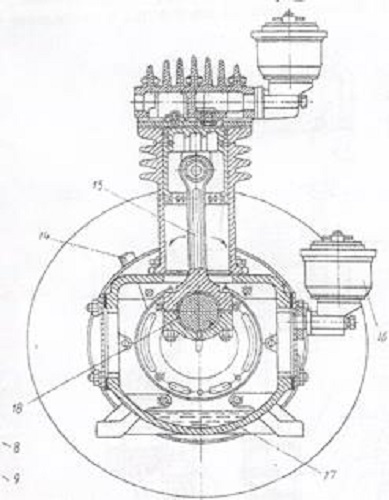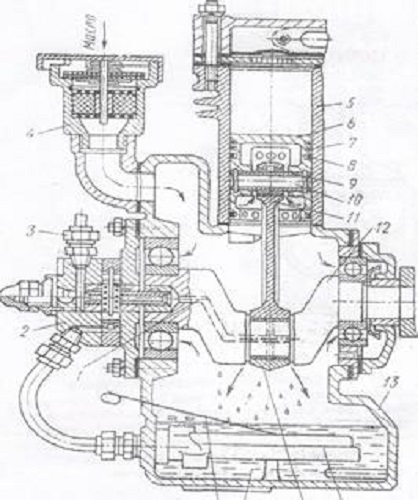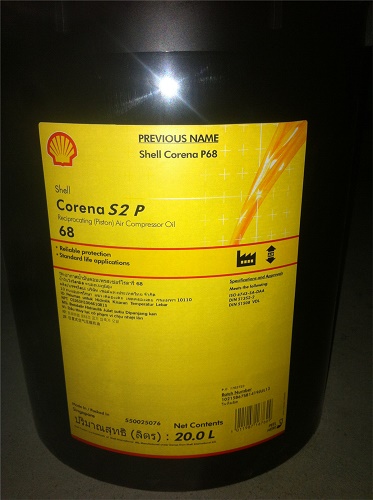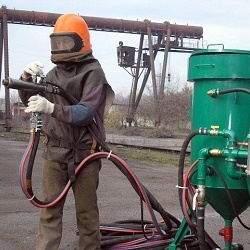Oil change in the compressor
Compression units are widely used in industry for pumping process gases. Relatively small compressors are used in technology for circulating refrigerants or forcing air, which is required for the operation of pneumatic tools, filling tanks and chambers, blowing equipment. To prevent all moving parts from overheating, corrosion and heavy wear of rubbing surfaces, oil for the compressor is poured into the system. It is this that creates comfortable conditions for the normal operation of mechanisms and ensures the necessary service life.
Content
Piston compressor lubrication system
During the operation of the unit, the oil should cover all internal parts with a thin film. This is achieved in two ways of organizing the compressor lubrication system:
- sprinkling;
- circulation with the oil pump.
In the first case, the design provides special oil sprinklerconcerning the movement of the oil filling the crankcase.
Important! This method is used in low-maintenance equipment, because it does not provide effective wetting of thin gaps, does not provide for proper cooling and cleaning of grease.
Spray lubrication of the compressor is shown schematically in the figure below.


Here 1 is the main bearing; 2 - piston pin; 3 - passages; 4,13 - holes in the aisles of the connecting rod for draining oil; 5 - oil scraper ring; 6 - the piston; 7 - cylinder; 8 - blower; 9 - flywheel; 10 - crankshaft; 11 - cover; 12 - oil sprinkler; 14 - level indicator; 15 - connecting rod; 16 - breather; 17 - crankcase; 18 - liner.
For a piston compressor, the second lubrication option is more commonly used, based on oil circulation through an oil pump.. In this capacity is a gear pump or lubricator. It takes fluid from the crankcase and delivers it under pressure to all the most important nodes. In such a scheme usually include cooling equipment, oil filters, coarse and fine cleaning.System health is monitored. according to manometer readings.

The circulating lubrication system looks like this:
Where 1 is the channel in the crankshaft; 2 - oil pump; 3 - pressure sensor; 4 - breather; 5 - cylinder; 6 - the piston; 7,8 - rings; 9 - connecting rod bushing; 10 - piston pin; 11 - connecting rod; 12 - crankshaft; 13 - crankcase.
Requirements for used oil
For proper operation of the mechanisms, it is necessary to pour oil into the compressor that meets certain characteristics.
Important! Manufacturers of compressor equipment usually indicate the recommended brand of lubricants in the product passport.
For units that produce high-pressure air at moderate temperatures, not motor ones are used, but special compression oils. Compressor oil is usually obtained from heavy oil fractions that have undergone vacuum rectification and numerous purification steps. It must have a number of necessary qualities:
- resistance to oxidation at high temperatures;
- low tendency to form deposits;
- high flash point;
- chemical inertness;
- low pour point;
The most important characteristic is the kinematic viscosity of the oil, which determines its hydraulic and wetting properties.. Of the domestic brands for compression equipment, it is often advised to buy KS-19. High performance has products known world brands with the name: Shell, Xelix, Castrol. Experts recommend using the following imported oils for air piston compressors.
- Shell Corena S2 P 68which is suitable for operation at temperatures up to 220aboutC and is characterized by excellent anti-wear properties, complete lack of deposits and good separation from the aqueous phase.

- Mineral oils of the Castrol Aircol PD series and synthetic Castrol Aircol PG 185, which have a long service life in harsh conditions.

Self-replacement grease in a piston compressor
After the equipment has worked out a manufacturer-defined resource, it is required to change the oil in the compressor. You can do this yourself in the following order.
- At the preparation stage, the receiving capacity of the required volume is prepared and the compressor itself is heated to speed up the oil change process.
- Unscrew the drain plug or remove the glass level control. To facilitate drainage, open the filler hole. For complete emptying it may be necessary to tilt the compressor.
- It is important that when replacing the lubricant inside the compressor no deposits left. To do this, open the top cover. All internal parts are cleaned with a brush dipped in gasoline, and wiped dry with a clean cloth.
- The cover is put on a regular place.
- The filter, the oil level regulator, the pump and other equipment of the circulation circuit are purged with air and washed with gasoline, followed by drying.
- Closed drain hole.
- It is necessary to pour fresh grease in the neck, focusing on the number of drained mining. At the end of the filling it is necessary to check the oil level in the compressor. on the inspection hatch or level gauge glass.
Important! About an hour will be required for the distribution of fluid in the internal cavities and air displacement. After that, a test run of the compressor is performed with a check of its working technical parameters, including oil pressure.
Timely and correct replacement of grease will allow trouble-free operation of the compressor during the entire estimated service life.

/rating_off.png)











